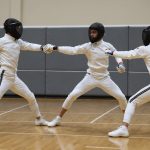Understanding the Offensive First Step
In the realm of basketball fundamentals, mastering the offensive first step is paramount. This initial movement, a vital component of UK basketball techniques, is the difference between swiftly bypassing a defender and being halted in your tracks. At its core, the offensive first step involves the explosive propulsion from a stationary position, enabling a player to gain an edge over their opponent.
Players often grapple with challenges such as timing, balance, and hesitation when executing this crucial move. A common hurdle is the lack of coordination between hand and foot movements, disrupting the seamless flow needed for an effective first step. Additionally, poor footwork can prevent players from generating the necessary quickness and agility.
Also read : Top off-season techniques for uk basketball players to maintain muscle mass
An improved first step doesn’t just facilitate better offensive moves; it significantly elevates overall game performance. By perfecting this technique, players can increase their scoring opportunities, maintain better control over the ball, and outmaneuver adversaries with ease. Furthermore, a sharp offensive first step creates space on the court, granting players the strategic vantage necessary for successful execution of plays and passes. Embracing and honing this aspect of basketball enhances both individual and team dynamics, propelling players to new heights.
Importance of the Offensive First Step
Understanding the offensive skills is vital in player development, particularly when focusing on basketball fundamentals like the offensive first step. A quick and effective first step can dramatically influence a player’s ability to create space from defenders. This tiny yet crucial movement can be the key to unlocking a player’s potential on the court.
Have you seen this : Maximizing Injury Prevention: The Best Cross-Training Techniques for Basketball Players in the UK
The role of the offensive first step is pivotal in basketball success. It serves as a fundamental strategy for gaining an advantage over the opposition. When executed properly, it allows players to break free from defenders and move towards the basket with greater ease. This movement isn’t just about speed; it’s also about precision and timing.
Basketball fundamentals emphasize the importance of mastering this skill. A well-developed offensive first step can elevate a player’s overall game performance, making them more versatile and difficult to guard. Such a skill contributes significantly to a holistic approach to player development, encouraging athletes to refine and enhance their repertoire of offensive skills.
Players who excel in this aspect often find themselves more capable of executing plays, thereby contributing positively to their team’s dynamics and success.
Essential Footwork Techniques
Footwork drills are crucial in basketball, enhancing a player’s movement and agility on the court. Mastery of fundamental footwork is essential for executing effective offensive plays. Key movements include pivoting, sliding, and sprinting, each honing agility and quick direction changes. Practising these movements regularly is vital for players seeking to elevate their game.
For comprehensive development, dedicate time to specific drills aimed at enhancing lateral movement and quickness. One such drill is the defensive shuffle, which helps in maintaining a low stance while moving side to side quickly. Another effective drill is the ladder drill, enhancing fast-twitch muscle response crucial for player movement. Incorporating these drills into your routine will undoubtedly improve your on-court agility.
Maintaining balance and stability during transitions is another critical aspect of footwork. Focus on keeping your centre of gravity low and engaging your core muscles. Transitioning smoothly from offence to defence requires adept control over your movement, something you can achieve with focused practice.
Incorporating these tips and drills into your training regimen will not only boost your basketball agility but also provide you with greater confidence and effectiveness in competitive settings.
Proven Drills to Enhance Your First Step
Improving your first step in basketball requires focus on agility training and skill development. Mastering effective drills helps players build speed and agility, crucial for gaining advantage in a game.
Footwork Drills
Incorporating footwork drills is essential for agility training. Ladder drills, for example, are excellent for increasing foot speed and coordination. These drills require the player to move their feet quickly through a ladder laid on the ground, enhancing agility and quickness.
Cone drills enhance lateral movement, crucial for dodging defenders. By setting up cones in various formations, players improve their sidestepping agility, enabling rapid direction changes.
Shadowing exercises with a partner can simulate defensive pressure. This drill involves mirroring a partner’s movements, refining your adaptability and developing anticipatory skills necessary for basketball.
Strength and Conditioning
Plyometric exercises are pivotal in building explosiveness. These routines involve rapid, powerful movements like jumping, improving the energy discharge rate of leg muscles.
Lower body strength workouts are critical. Strong legs support quick bursts forward, crucial in basketball. Resistance band routines further enhance agility, providing resistance that strengthens muscles used in directional changes.
Game-Like Scenarios
One-on-one drills simulate game situations, allowing players to practice their first step against real defensive styles. Practicing against various defenses improves adaptability and exposes players to different scenarios, fostering quick decision-making during drills.
Speed and Agility Drills
In the ever-competitive world of basketball, enhancing one’s speed and agility is paramount. The effectiveness of speed drills lies in improving first-step explosiveness, which is crucial during basketball conditioning. For instance, the three-cone drill focuses on short, quick bursts, enabling players to explode past defenders. Shuttle runs emphasize lateral movements, honing agility and swift direction changes.
When it comes to agility training, routines are adaptable for both indoor and outdoor settings. A combination of ladder drills can improve foot speed and coordination. Indoor practices might involve cone-based exercises that simulate game scenarios, while outdoor sessions can incorporate more space-demanding activities like sprints and hurdle hops.
Using Resistance Tools
To further enhance pace and reaction times, the use of resistance tools is vital. Resistance bands are excellent for adding intensity to speed drills, providing the extra challenge needed for muscle development and improved burst speed. Weighted vests, on the other hand, elevate basketball conditioning sessions by increasing stamina and endurance.
By incorporating these varied agility training routines, athletes can significantly upgrade their game, making swift and decisive movements on the court, while maintaining a competitive edge in dynamic game situations.
Tactical Approaches for the Offensive First Step
In basketball, understanding defensive alignments is crucial for executing effective offensive strategies. Players need to recognise how their opponents are positioned on the court in order to exploit any weaknesses. If a defender is playing too tightly, using quick offensive strategies can create opportunities to drive past them and score. Conversely, if they’re giving too much space, a well-executed shot might be the best choice.
The art of reading defenders involves observing body language and tendencies to anticipate their next move. By recognising subtle cues, players can decide which offensive move will gain the upper hand. For instance, if a defender is likely to overcommit, executing a quick change in direction can be highly effective.
Employing fakes and hesitation moves can also be beneficial in gaining an advantage. These basketball tactics can give players the split-second needed to break free from defensive pressure. A convincing fake can make a defender jump early, opening up space for a clear shot or pass. Similarly, hesitation moves disrupt the defender’s rhythm, allowing the offensive player to dictate the pace.
Through strategic positioning and anticipatory skills, players can outsmart their opponents and maximise their scoring opportunities.
Expert Insights and Testimonials
Gathering player feedback from athletes across the UK, we delve into the transformative effects of targeted training. For many, enhancing that crucial first step is pivotal, as it can dictate on-court success. According to numerous testimonials, adopting specific techniques has catalysed performance improvements.
In discussions with esteemed UK basketball coaches, one prevalent piece of coaching advice is the emphasis on footwork. They advocate for drills that foster agility and responsiveness. Coaches believe that by prioritising swift movement in the first few moments of a play, players can gain a competitive edge. This focus on technique and repetition can make a measurable difference.
Basketball mentorship is another central theme. Coaches mentor players not only in physical skills but also in mental resilience and game strategy. Through dedicated practice and consistent feedback, athletes often find significant advancements in their game.
Success stories abound amongst those who commit to these strategies. Players often recount how focusing on their first step, along with the integrated support from coaches and mentors, elevated their on-court presence. The consistent reflection and adaptation of these tactics have undeniably helped players refine their skills and boost their confidence.
Resources for Continued Improvement
Explore a wide range of basketball resources tailored to enhance your game! From local training programs to online tutorials, the options are plentiful for UK players. Whether you’re looking to enhance offensive skills or seek one-on-one coaching, these resources can guide you effectively.
Local Training Programs in the UK
In the UK, top-notch training programs specialize in honing offensive skills. Facilities like the London Basketball Academy and Manchester Hoop School offer camps and clinics focusing on skill enhancement regularly. For those seeking coaching clinics, these programs are ideal for intensive one-on-one coaching tailored to your personal goals.
Online Tutorials and Video Resources
Transitioning to online platforms, several YouTube channels, such as Coach Dave’s Basketball Tips, provide free, in-depth tutorials on skill development. Platforms like Coursera offer specialized training courses created by expert coaches. Don’t miss out on social media resources like Instagram’s @UkHoopsTips, offering quick tips and techniques to improve your play daily.
Testimonials and Success Stories
The success stories of UK players like Ella Smith, who improved her first step significantly, are great motivators. Coaches provide insights into effective training methodologies, emphasising practice and dedication. Community support plays a crucial role, fostering a supportive environment for player development and motivation.
Performance Metrics and Improvement Tracking
In the realm of basketball, performance tracking serves as a cornerstone for both players and coaches. Setting clear performance goals is essential for targeted skill improvement. By establishing specific benchmarks, athletes can focus their practice sessions and measure progress effectively.
One recommended method for tracking progress in drills involves utilising basketball analytics. This approach provides quantitative evidence of improvements and areas needing attention. Analytics allow coaches to objectively assess performance, offering insights beyond what can be observed with the naked eye.
Moreover, video analysis emerges as a powerful tool for skill assessment. Recording sessions enables athletes to visually evaluate their technique, identify mistakes, and make necessary adjustments. This method also facilitates a deeper understanding of the game, as players can study their movements and strategies in detail. Video footage can highlight subtle aspects such as foot placement or shooting form that might otherwise go unnoticed.
For optimal results, a combination of basketball analytics and video analysis is recommended. This dual approach not only enhances skills but also builds confidence, ensuring players are well-prepared for competitive play. Emphasizing consistent and thorough skill assessment, this method of tracking paves the way for continuous improvement.











